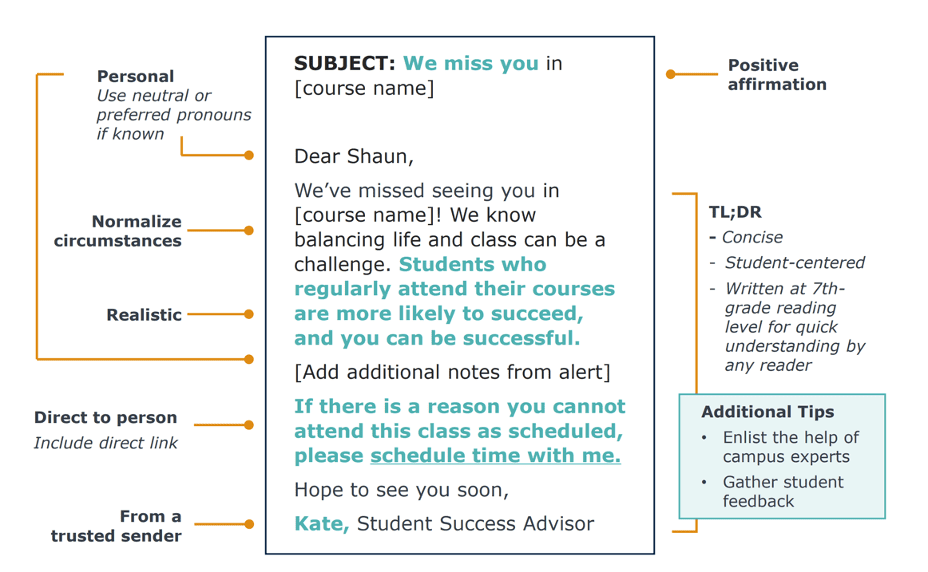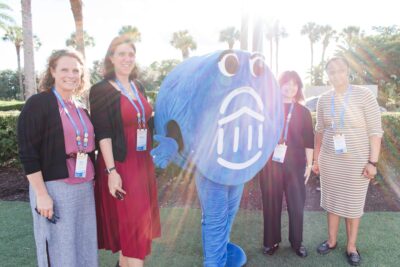2024’s biggest student success lessons
At EAB, we’ve spent 2024 partnering closely with colleges and universities, analyzing trends, and learning from on-the-ground success stories to uncover what works in this evolving landscape. Ed Venit, Managing Director of Strategic Research at EAB, reflects, “2024 was a pivotal year for institutions tackling megatrends like academic preparation and mental wellness—challenges that will shape student success strategies for the next decade. It’s been inspiring to see so many of our partners taking proactive steps to safeguard future student outcomes.”
Drawing on our research, insights from hundreds of surveyed student success leaders, and institutional partnerships, we’ve identified four key lessons and actionable strategies to help your institution meet the moment and foster student success in 2025 and beyond.
1. You offer lots of resources for students—but they need more help finding them.
Caring for students means more than just providing a wide array of resources: it’s about helping them navigate those resources effectively. When students encounter friction through unclear processes or difficulty accessing support, especially during times of stress, they may feel overwhelmed and question whether their chosen institution truly prioritizes their success. This challenge has been compounded by the growing student readiness crisis, which has left many students arriving on campus underprepared for the demands of college life.
EAB’s survey of higher education practitioners revealed that lapses in student customer service often leave students feeling frustrated and disconnected.
Insights from EAB’s Insight Paper: “Student Customer Service Perceptions Among Higher Ed Practitioners”
Read the Insight Paper-
81%
of practitioners think current students have difficulty connecting with the right people or resources at least some of the time.
-
56%
of survey respondents said students are overwhelmed by the number of resources available in different places.
-
19%
of practitioners reported that their students don’t face difficulties accessing mental health support, meaning the majority are struggling to find the right help when they need it most.
Institutions must prioritize getting students to the right resources on the first try. Streamlining processes and offering clear, intentional guidance can prevent students from feeling lost in a sea of options and help them stay focused on their success.
- Learn more about what student customer service is (and isn’t) and how it impacts student engagement and retention by exploring the full insight paper here.
2. The conversation has shifted from “Should we use AI?” to “How do we use AI the right way?”
The conversation around AI evolved dramatically across 2024. Initial fears centered on job security have largely subsided. What’s emerging as a priority for student success professionals is how errors and biases in AI might impact students. They expressed concern about the ethical use of AI, reflecting a broader uncertainty in institutions that haven’t yet taken a clear position on AI or created spaces to address questions about its security and implementation.
Insights from EAB’s Insight Paper: “The Role of AI in Student Success”
Read the Insight Paper-
13%
of respondents are worried about losing their jobs to AI.
-
64%
are worried errors in AI communications could negatively impact students.
The growing concern about AI’s impact on students suggests that practitioners are beginning to accept AI and shifting their focus toward ensuring they’re using it responsibly. To “do it right,” institutions should establish clear guidelines for ethical AI implementation, provide robust training for staff to understand AI’s capabilities and limitations, and regularly audit AI tools to identify and mitigate biases. Creating spaces for open dialogue about AI’s use and potential risks is equally critical to fostering trust and transparency. Institutions that address these concerns head-on will be better positioned to harness AI’s potential while minimizing risks and maximizing its positive impact on student success.
- Explore how AI tools can help you deliver personalized student support at scale, enhance staff efficiency, quickly identify student needs, and more in this infographic.
3. Inclusive, asset-based communication is critical amid students’ mental health challenges.
You’re already sending communications to students, but by being intentional with your messaging, you can do so much more. Thoughtful, student-centered communication has the power to build a sense of belonging—helping students feel valued, supported, and connected to your institution. This is even more critical during a time of rising mental health challenges. Mental health has now surpassed “academic difficulty” and “financial challenges” as the top student success concern. Students are now looking to their colleges and universities not just for academic support, but for holistic care.
By recognizing and uplifting students’ strengths and unique contributions, institutions can create an environment where students feel empowered to seek help, engage with campus resources, and overcome barriers to success.
- Insights from EAB’s Webinar: “Technology’s Role in Belonging: Tips to Understand and Empower Student Inclusion on Campus”
Sample Asset-Based Email

A Successful Switch
-
32%
increase in response rate achieved by Campbell University after implementing asset-based language email templates, resulting in a 65% response rate overall.
Investing in inclusive communication strategies isn’t just about addressing challenges—it’s about fostering resilience and promoting a culture of care that allows every student to thrive.
- Discover more about creating intentional, student-centered communications in our “Make Every Communication Count” toolkit.
4. Career readiness is a key component of student success.
Career readiness has become a defining metric for student success, as students increasingly expect their education to provide clear pathways to meaningful employment.
Insights from EAB’s Insight Paper: “The Student Readiness Crisis: A Mandate for Change in Education and the Workforce”
Read the Insight Paper-
80%
of high school students now view on-the-job learning experiences, like internships and apprenticeships, as essential to their postsecondary education—a 14% increase since 2022.
-
39%
of new college graduates said their education did not prepare them for transitioning into the workforce.
Preparing students for career success requires integrating career readiness into the academic journey from day one. Strategies like experiential learning, internships, and career-focused advising can help students connect their studies to future opportunities. Additionally, tools like Navigate360 enable institutions to track career engagement, identify gaps in preparation, and proactively support students in their career development.
- Assess your preparedness in career support and other key areas in our “Student Readiness Self-Audit“.
Turning Challenges into Opportunities for 2025
As we look ahead to 2025, each challenge is an opportunity to rethink how we support student success. By embracing innovation, simplifying processes, and staying focused on what truly matters, you can empower students to not only thrive during their college journey but also step confidently into their futures.

More Blogs

Four signs it’s time to break up with your student CRM

Three lessons from 1,200 student success leaders on higher ed’s future
